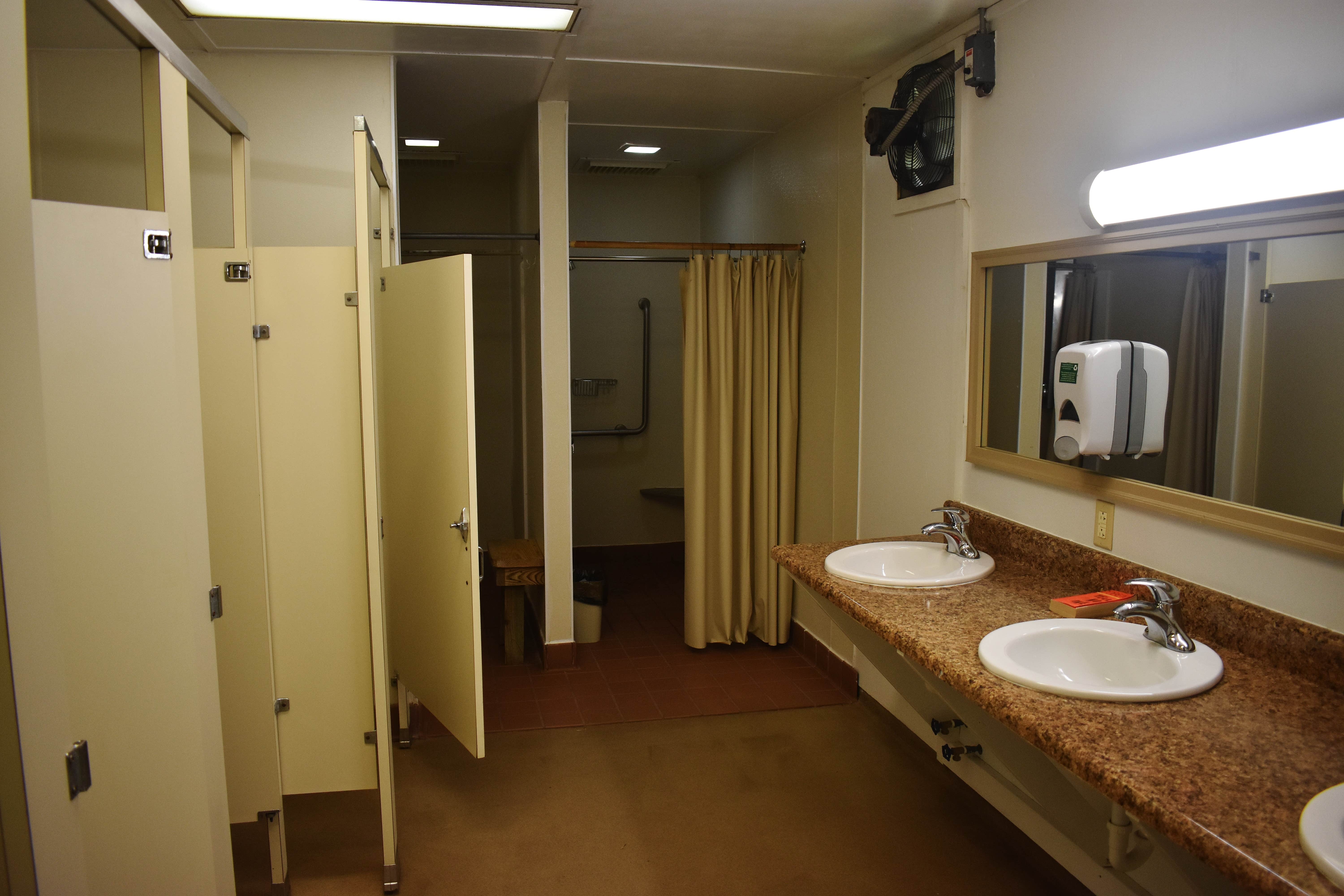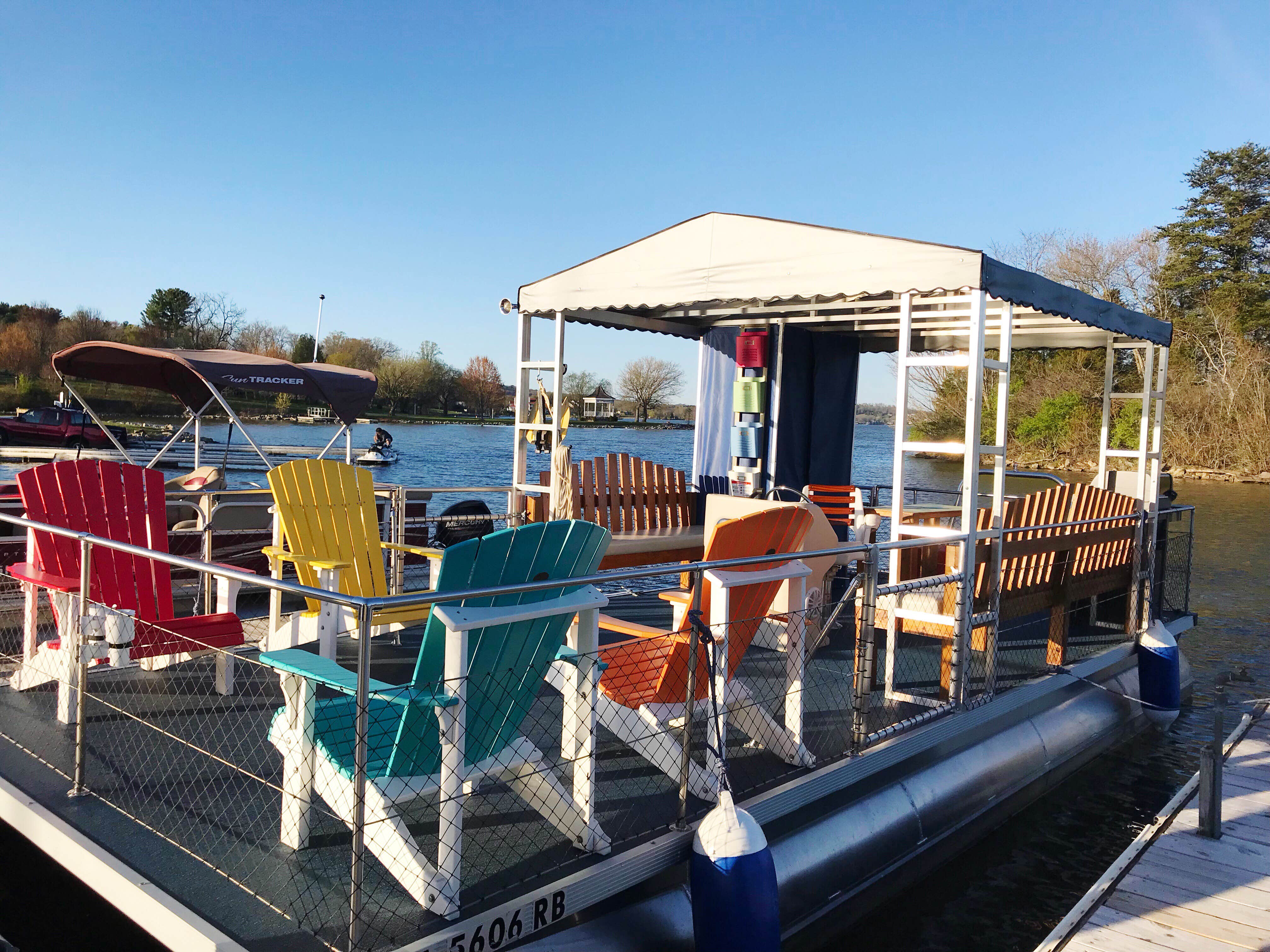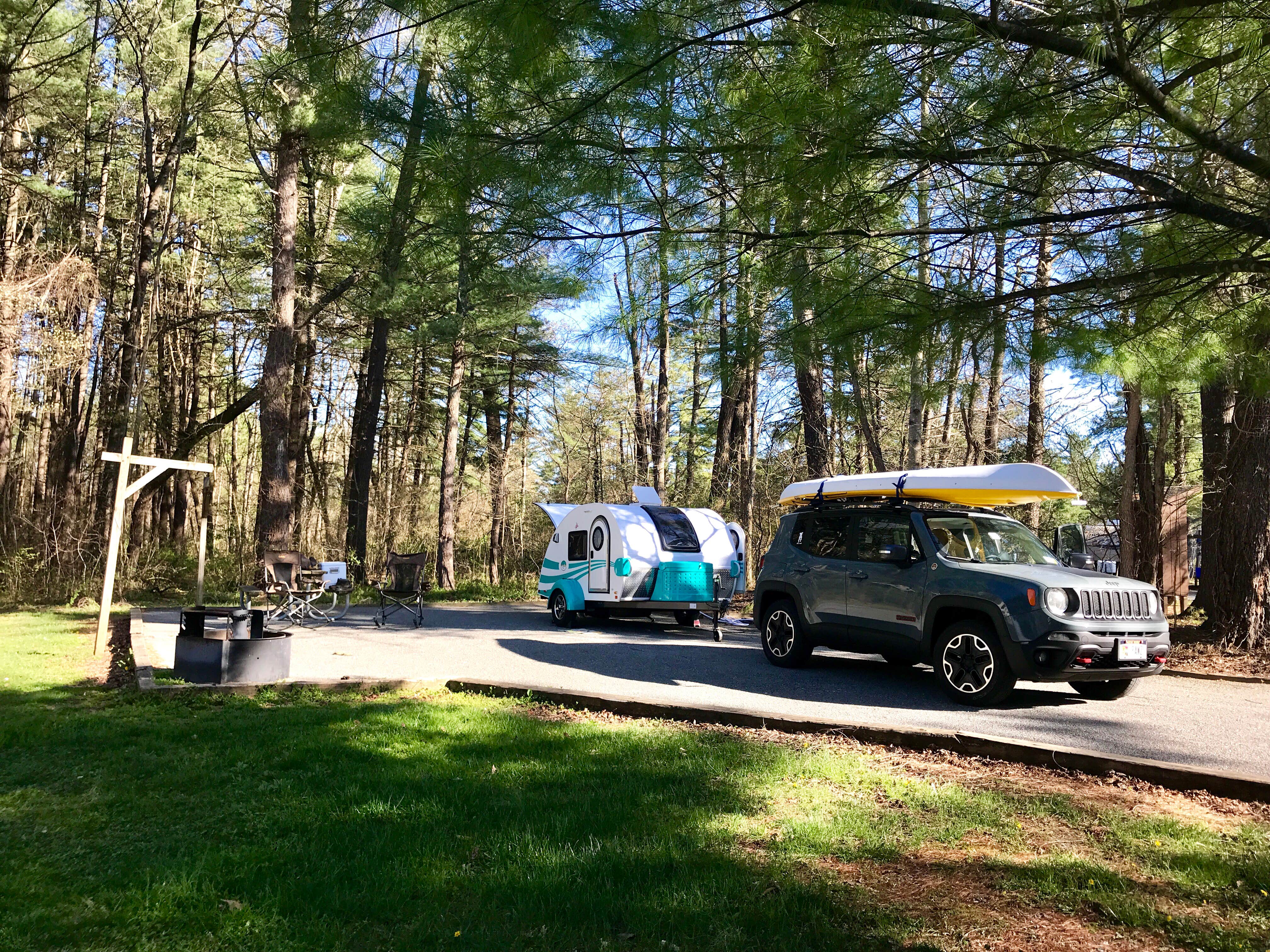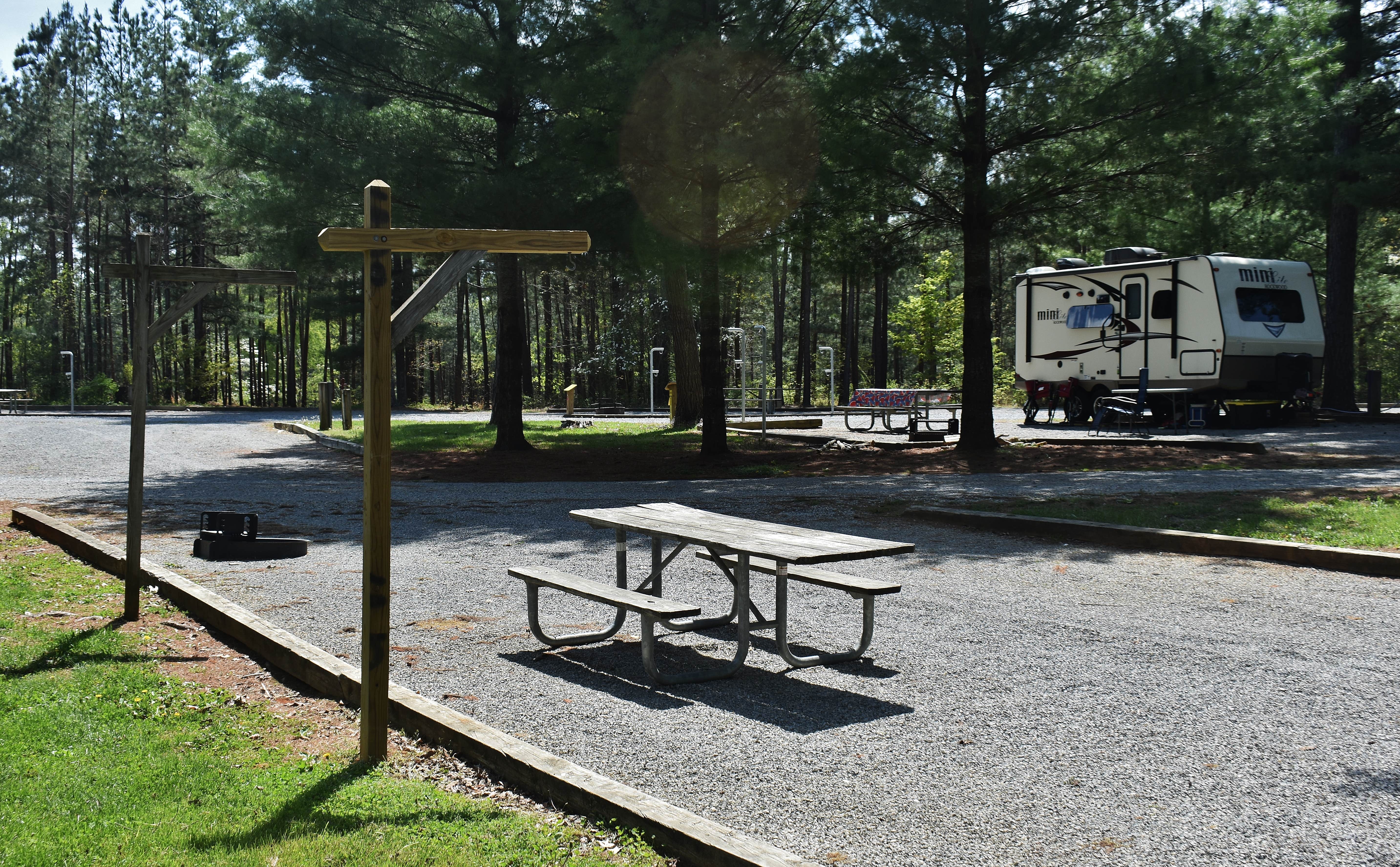Campground Review: Claytor Lake State Park, Dublin, VA
Claytor Lake State Park, Dublin, VAhttp://www.dcr.virginia.gov/state-parks/claytor-lake#general_information
A beautiful and well situated waterfront State Park 2.7 miles from I-81. Claytor Lake SP basically inhabits a peninsula that juts out into the meandering Claytor Lake. A free public boat landing splits off to the right at the park entrance…where power boaters gain their access for fishing, water sport activities or relaxing.
Claytor Lake State Park sprawls out in every direction, with four RV/camper/tent campground loops A, B, C, and D loops (A was closed during our visit in early May). B loop also has four new Yurt rentals with functional wraparound decks (one handicap accessible). Each loop has a bathhouse, and each site has water/electric. C and D loops offer little to no site to site privacy, and loops A and B sites are wooded and angled to afford a scant more privacy.
Cabin rentals are available along the lake in a more separate area, as if the designated swimming and marina areas. Some sites are reservable online and brightly marked as such, others are self-pay. Prices seem high to me ($36.59 water/electric sites)and out-of-staters get dinged with an even higher rate ($41.86).
Want to use the State Park simply to hike the trails?…$5 parking fee for residents and $7 for non-residents. State Park Launch/Park $7 and $9 respectively. I realize parks are always underfunded and need to offset the deficit, but I don’t appreciate singing out-of-staters with a higher fee. https://m.youtube.com/watch?v=wGgIqZOH2Ps
Each loop has its own host and each cares for the loop’s grounds and bathhouse with meticulous care.
There are a fair amount of trails in the park (roughly 5 miles worth). Trails are wide and seemingly cleared of leaves…new trail signage and tree placards abound, as new benches strategically located near lake views. Signage also admonishes against use of nonmarked or unauthorized trail blazing…as well as no random swimming or cliff jumping. The big plus…you can MTB the trails! I did not inquire, but some signage lends itself to the idea a local Boy Scout troop maintains part of the trail, as Scout signage exists. There was also evidence a local 5K run takes place on the trails.
The beach and boat area are nicely distanced from the RV/Camper/tent campsites.
Lake views are serene. Homes dot the opposite banks, but most are so nicely manicured you wistfully gaze dreaming of owning one. My particular favorite rests upon a high, sheer rocky cliff.
Weekdays early May saw minimal campers.
A very nice, well-maintained State Park worth visiting!
Product Review: Renogy Solar Backpack
Renogy Solar Backpack https://www.renogy.com/
As a review ranger for TheDyrt.com, the Renogy Solar Backpack https://www.renogy.com/renogy-solar-backpack/ was provided by Renogy for testing and review.
Dimensions: 18.1”h x 11.8”w x 5.9”d
Capacity: 20 liter
Weight: 2.2 lbs.
Solar Panel Dimensions: 11.3”x9.7”
The Integrated solar panel has one USB port.
The solar panel module converts solar power into DC power…utilizing an electrical management system with a stable 5V DC output.
User Guide solar panel specifications place maximum rate of power at 5.6W and maximum current output at 1.2A.
Interestingly, instructions warn of using the solar panel “when relative humidity is higher than 80%…” Not too encouraging for here in SWFL. We’ll see if and how it’s affected.
Both materials and construction of the backpack look and feel high quality. Stitching is even and clean.
Fabric is a medium weight packcloth with a blue denim-like coloration, giving it a classy urban appearance.
Interior seams are banded and sewn, preventing fabric fraying or snagging and increasing durability.
Exterior zippers have double-sided closure fabric, minimizing water penetration.
While I would classify this on the lighter side of a daypack, it is loaded with pockets and hidden zippered sleeves. Though it does have dual “zipper-expandable” water bottle pockets on each side…I believe this fits more into an urban backpack style. It’s so sharp, I don’t want to soil it’s sophisticated look.
But who am I to limit how someone may choose to use this wonderfully clever backpack.
Shoulder straps are 2.5” wide and possess an “anatomical curve.” The padding is rather thin. Strap webbing is stout and buckles are bar-tacked for strength. The padded lower lumber region contains a clever “hidden” zippered pocket. A similar padded area like the lumbar pad tops the upper shoulder area but does not have the hidden zippered pocket. Much to my dismay, no waist-belt or sternum strap are offered. When wearing a nylon rain jacket during downpours, I did get frustrated with shoulder straps that wanted to slide off my shoulders…a problem that a sternum strap would eliminate. To be fair, if the outer rainshell was a different texture or material, shoulder straps may not have been prone to slide.
A cavernous zippered padded computer sleeve is located on the wearer’s back-panel right side…the full height and width of the backpack. My 17” Toshiba laptop slid right in.
The outermost pocket zips entirely off and reverses which exposes the integrated 5W solar panel. A center zipper reveals a myriad of interior pockets, some designed for the charging devices (marked by device icons) and others for writing utensils and smaller personal items in three mesh pockets. The iPad sized pocket is thinly padded. A snap hangs from webbing for your keys.
The main body of the pack has a 3/4 zipper and offers one large pocket to separate from the rest of the main compartment. This area offers roughly 4” of depth to store belongings.
Solar panel:
Follow directions and remove the thin clear protective sheet on the solar panel grid.
Full exposure to direct sunlight is imperative to assist in charging. I found this Renogy Solar Bsckpack at 5.6W is obviously a much slower charge than their 10W Portable Folding Solar Panel.
Through automotive glass I experienced a reading of a charge but the mobile device never gained a percentage. In direct sunlight, while using my iPhone 7, I saw a 1% gain every four minutes. USB ports feel loose or sloppy in their connectivity, which I’m certain affects charging…this is the OEM iPhone7 charging cord, my Verizon work phone’s OEM cord and an aftermarket cord.
If using the Renogy Solar Backpack for light hiking purposes, care must be given not to damage the solar panel screen, from outside abuse if left exposed or from packed items if zipped facing the pack interior. Sharp or pointed objects can perforate the panel. If this were to occur, Renogy claims this will not render the solar panel inoperable but be assured it will reduce charging capabilities.
Initially, I was concerned about the water repellency of the fabric and zippers…but after being caught in several West Virginia downpours, both performed admirably. No water penetrated. However, I would highly recommend picking up a rain cover if you truly want to hike with the Renogy Solar Backpack.
Final Thoughts
Personally, I really like the Renogy Solar Backpack. Though it may not see much of the backcountry, it accompanies me, daily, in my work truck and short treks into the woods. It’s overall functionality far outweighs any negatives I have mentioned, keeps my job site paperwork nicely organized and keeps my handheld devices charged and operational. Not to mention it’s good looks!














































